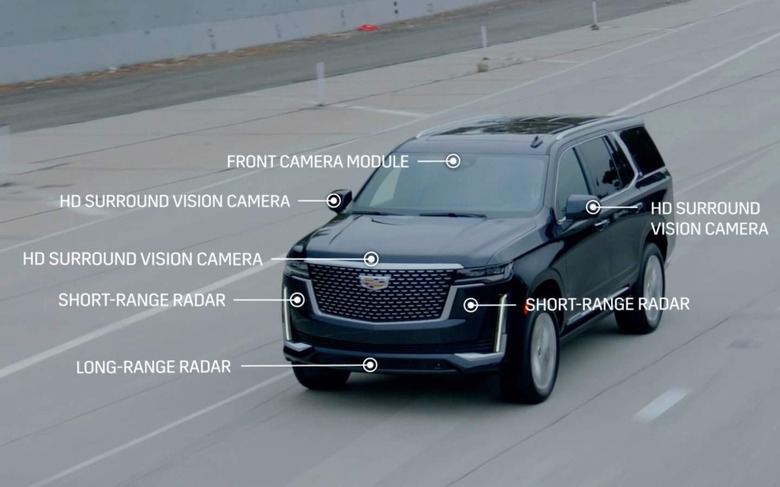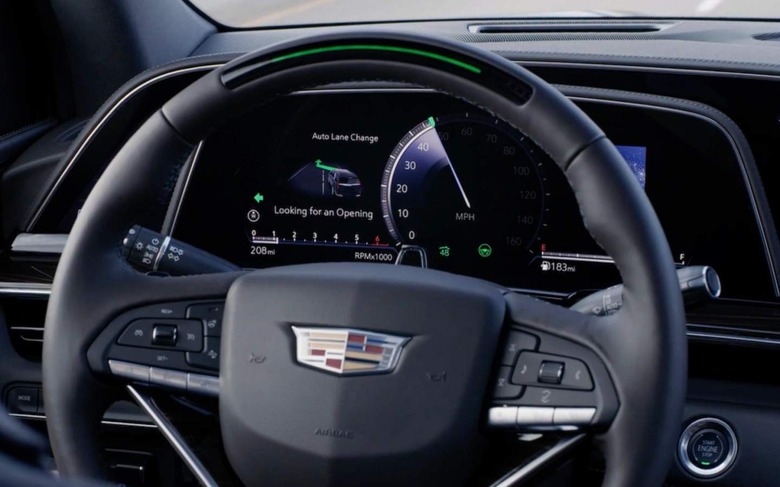Cadillac's Escalade Super Cruise Update Is A Bigger Milestone Than You'd Guess
Cadillac's over-the-air update support is about to put its Super Cruise money where its mouth is, with GM confirming that the 2021 Escalade is in line for its first big test of the system. Though Cadillac – as the first brand in GM's line-up to offer the hands-free driver assistance technology – has used OTA updates before, that's only been for piecemeal updates of new mapping data.
Super Cruise relies on those maps heavily, and they're no ordinary cartography. The system – which allows drivers to take their hands off the wheel while on certain stretches of highway, with an attention-monitoring camera on the steering column making sure they're still giving the road around them due regard – is geofenced, and can only be turned on when within a specific set of roadways.

General Motors has been progressively adding to those roadway maps in North America, since Super Cruise first launched in 2017 on the CT6, and it has used over-the-air updates to deliver them to cars equipped with the feature. The last big system update, however, required CT6 owners take their vehicles in to a dealership for installation. That all changes with the so-called VIP architecture on which the latest iteration of Super Cruise is based.
The most obvious improvements of the new architecture are Super Cruise's enhanced features. That began with lane change on demand earlier this year, debuting on the 2021 Cadillac Escalade. With it, tapping the turn signal would cause Super Cruise to shift lanes, assuming its various sensors decided the maneuver was safe.
Now, GM is adding more VIP-based features, including the ability for Super Cruise to automatically lane change. Rather than waiting for drivers to hit the turn signal, if the car ahead is slower than the current speed set for the system, it will automatically move around them. GM has also added the ability for Super Cruise to operate while the vehicle is pulling a trailer, though – due to the absence of sensors – the system only operates in its original mode, and lane changes have to be completed manually.
The new features will be offered on six model year 2022 vehicles, GM says, including the Cadillac Escalade, Cadillac CT4, Cadillac CT5, Chevrolet Silverado, GMC HUMMER EV Pickup. and GMC Sierra. However, owners of the 2021 Escalade who opted for the Super Cruise package will also be getting the new features, as GM flexes its OTA update abilities.
It's the first time a big firmware update like this has been released via the OTA system, though GM says it won't be the last. Although it wouldn't share specific details, the company confirmed that it has built in enough headroom within the VIP platform hardware for what it hopes will be the foreseeable future of new features. That way, some of the sting of buying a new car and then seeing a new version add covetable features the following year could be removed.

That's a well-known pain point for owners, but not one we've traditionally seen automakers be too concerned about. After all, progressive updates to vehicles are part of what encourages owners to buy new vehicles. We can probably thank Tesla in no small part – undoubtedly the most enthusiastic proponent of OTA updates in its EVs – for raising expectations that cars shouldn't necessarily stay the same for their lifespan as they were when they first rolled off the factory line. Now, that attitude of progressive improvement seems to be spreading throughout the auto industry.
Deployment details for the new firmware for the 2021 Escalade haven't been shared yet, and it's also unclear at this point whether there'll be a cost for the new feature. Adding it to the luxury SUV isn't exactly cheap: with the required options and extras for the system, you're looking at around $93,000 all-in for an Escalade with it installed.
Nonetheless, while Caddy's big truck may be at the high end of the market, Super Cruise – and, importantly, the VIP architecture – is progressively spreading into more attainable models. The 2022 GMC Sierra will be the biggest deployment so far for GM's hands-free system, as more nameplates under the company's big umbrella begin to offer it as an option.
